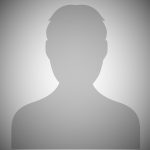As the global community commits to achieving net-zero carbon emissions, innovative strategies such as direct air capture (DAC) are gaining prominence. However, DAC, which is a key technology for carbon dioxide removal (CDR), is energy intensive and expensive, with $600-$1,000 per ton of CO2 removed being quoted for current small scale-systems.

Principal Fellow- Climate & Sustainability
Naser is leading research on carbon dioxide removals (CDRs), bioenergy, and carbon capture, utilization, and storage. He holds a BSc…
Naser is leading research on carbon dioxide removals (CDRs), bioenergy, and carbon capture, utilization, and storage. He holds a BSc in Chemical Engineering and a Ph.D. in Energy and Environmental Engineering, and he has 20 years of experience in the U.K. in both academia and consultancy. His main interests are industrial decarbonization, technology innovation, and policy modelling. In the U.K., Naser led the conceptualization of the U.K. government-funded BIOCCUS system, a community-scale biomass pyrolysis-based cogeneration technology with biochar production and CCUS. His current research interests are understanding the challenges and requirements for integrating CDR within industrial processes and assessing the opportunities for carbon utilization in industry in Saudi Arabia as part of the Circular Carbon Economy.
Expertise
- Carbon Dioxide Removals
- Industrial Decarbonization
- Bioenergy
- CCUS
Publications See all Naser Odeh’s publications

Advancing Hydrogen in Saudi Arabia: Evidence-Based Insights from Stakeholder Engagement and Expert Survey
As the global community commits to achieving net-zero carbon emissions, innovative strategies such as direct…
22nd May 2025
Decarbonizing Saudi Arabia energy and industrial sectors: Assessment of carbon capture cost
As the global community commits to achieving net-zero carbon emissions, innovative strategies such as direct…
25th March 2025

